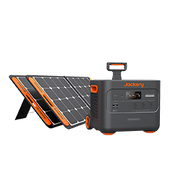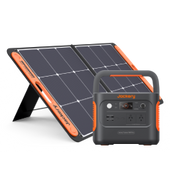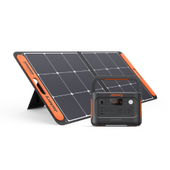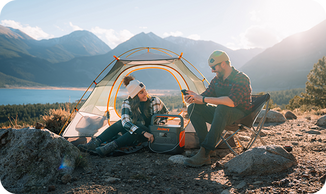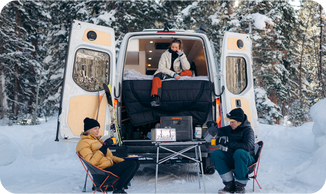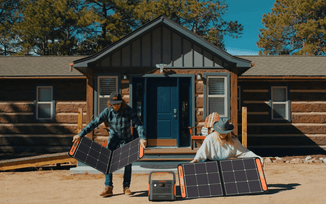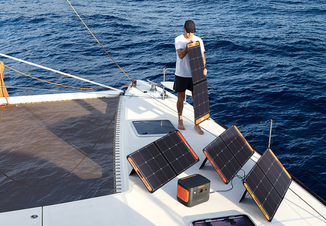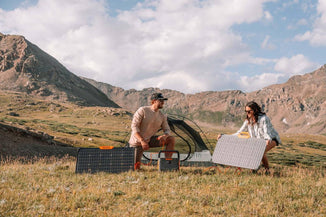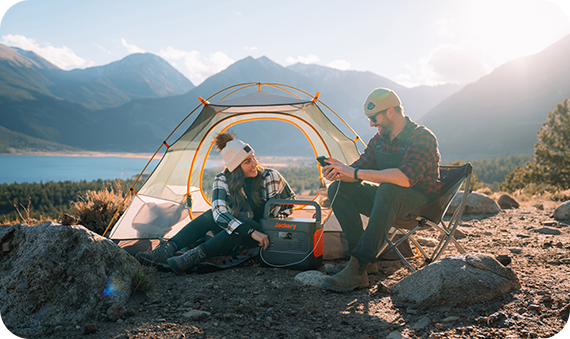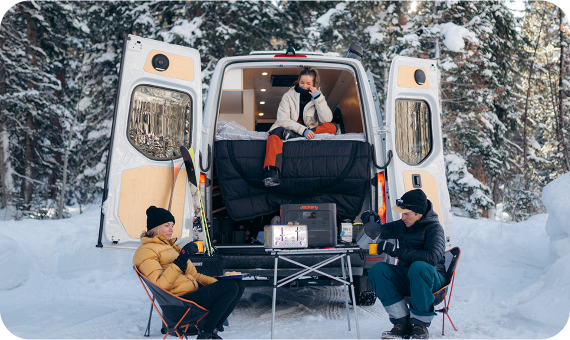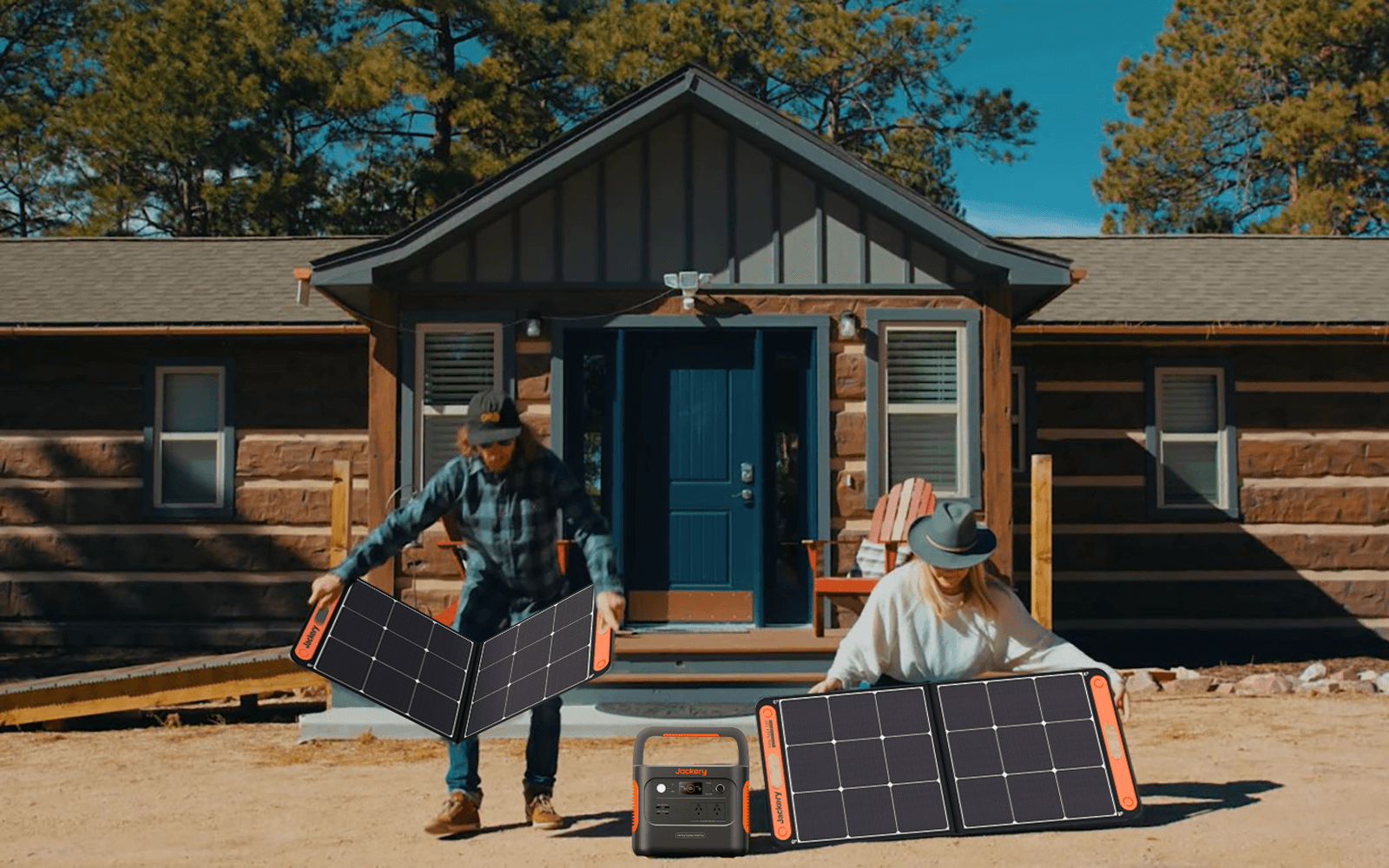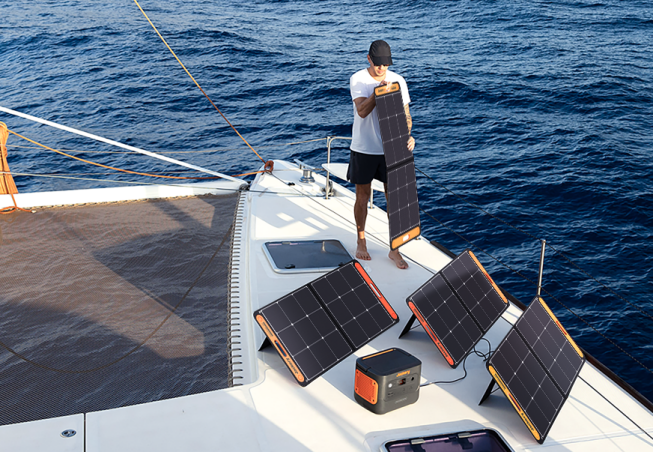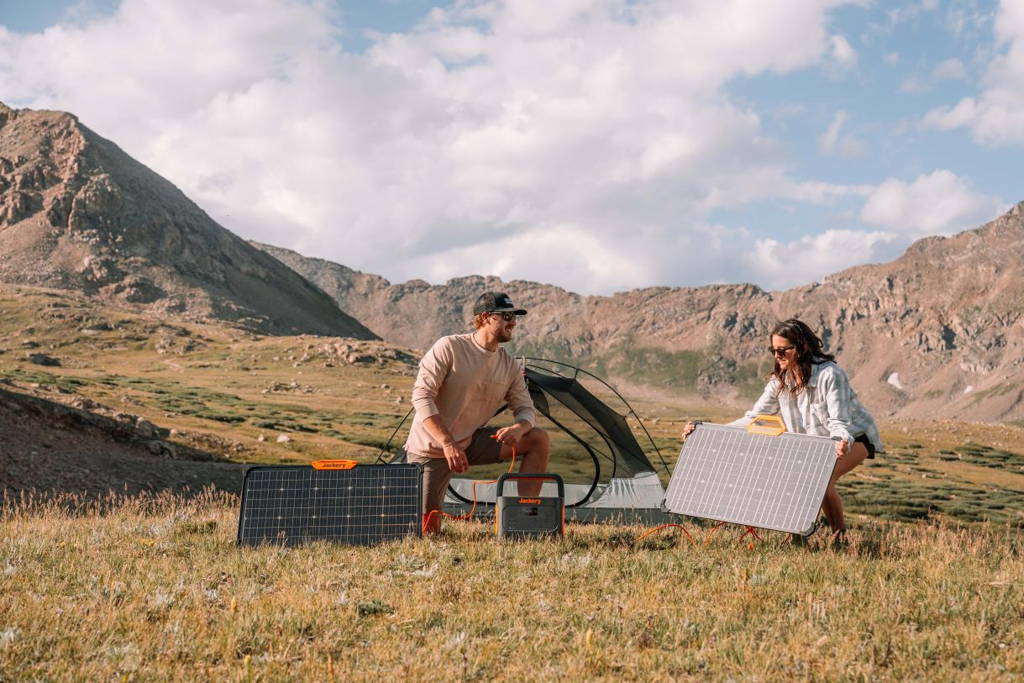|
Key Takeaways: |
|
• Hiking can provide a variety of benefits during cold winters. • Australia's five best winter hiking trails include Thorsborne Trail, Kangaroo Island Wilderness Trail, Larapinta Trail, Cape to Cape Track, and Jatbula Trail. • A winter hiking experience depends on preparation and having the right gear. • Taking specific steps can help you beat the cold and stay warm, satisfied, and safe during winter hiking. • We recommend Jackery Explorer 600 Plus and 300 Plus to charge the essential electronics and devices for your hike, such as your phone, radio, GPS device, and more. |
Why Hike in Winter?
Some people stay indoors all winter because it's too cold or dangerous. But if you take the proper steps, you can stay warm in winter. Likewise, if you use common sense, you can avoid the dangers that often occur in winter.
So don't miss out on the fun and benefits of winter hiking just because you think it's too cold or dangerous. Do you know what amazing benefits winter hiking can bring? The following will show you a variety of different benefits of winter hiking.
• Winter hiking will make you feel good and effectively relieve stress.
• Winter hiking is a good remedy for seasonal affective disorder.
• Winter hiking can help improve sleep.
• Winter hiking helps burn calories and fat and boost the immune system.
• Winter hiking is almost free of mosquito bites and pollen allergies.
• Winter hiking usually doesn't cost anything.
• One of the most significant benefits of winter hiking is that few people are on the hiking trails.
• On a winter hike, you can enjoy many new visual landscapes, such as fantastic ice formations, streams, and frozen waterfalls.
How to Plan Winter Hiking in Australia?
Winter hiking in Australia can be exhilarating, but it can also be excruciating. The beauty of winter can be deceiving, and unprepared hikers can be in great danger. Extreme weather conditions, such as sudden snowstorms or extreme cold, combined with inadequate preparation, can lead to accidents, hypothermia, dehydration, and even casualties. Therefore, a successful winter hiking experience depends on good preparation and sufficient equipment.

Plan Ahead
Planning is critical to having a perfect winter hiking experience. So, before you embark on your journey, take some time to plan your winter hike. Here are some things to consider when planning a perfect winter hike:
• Choose a well-maintained winter hiking route suitable for expected conditions.
• Deciding on a departure time is crucial to winter hiking planning.
• Plan roughly how long your winter hike will take. (The time it takes to hike in winter depends on the distance of your entire route, elevation, terrain, and pace.)
• It is also essential to research your winter hiking destination's environment and weather conditions.
• Being thoroughly familiar with your winter hiking route profile will enable you to plan your entire hiking trip strategically.
• It is also essential to plan your winter hiking plans according to the physical fitness levels of those travelling with you.
Winter Hiking Essentials
Generally, you don't need to carry a lot when hiking. After all, you'll carry everything during your hike, so the lighter, the better. However, winter hiking may require more gear to ensure safety throughout the hike.
Clothing
Consider dressing in layers and rainproof when hiking in the winter to adapt to temperature changes quickly. Of course, keeping warm is the most crucial thing when walking in winter.
Hiking Tools
The right tools can help you make your hike easier.
• Trekking poles provide extra stability on slippery terrain and uneven surfaces. In addition, you can use trekking poles to probe the snow to check for hidden rocks, streams, or soft areas.
• Ice picks can be an effective self-braking tool if you slip on steep snow or ice.
Safety Gear
Navigation and communication tools are essential tools for winter hiking safety.
• When hiking, always carry a navigation device such as a compass or GPS.
• Prepare a paper map of your chosen route and familiarise yourself with it before hiking.
• For added safety, bring a personal locator beacon (PLB).
• Staying connected is essential, but cell service can be spotty. Consider renting a satellite communicator to send SOS alerts and two-way text messages.
• Consider bringing a portable power station to power your phone and other electronic devices.
Daily Supplies
• Adequate water and food supplies are essential for an intense winter hike.
• Carry toilet paper, hand sanitiser, trash bags, and other essentials for personal hygiene.
Emergency Supplies
Prepare emergency gear for possible dangers and emergencies during winter hiking. You can prepare a repair kit for minor equipment failures, a headlamp with spare batteries, and a comprehensive first aid kit.
• Prepare a personalised first aid kit, including blister treatments, bandages, tape, antibiotic ointment, gauze pads, and any medications you or your companions may need.
• Another winter hiking must-have is a repair kit with a screwdriver, scissors, a fire starter, a flashlight, and a whistle.
The following is a winter hiking gear list that can be used as a guide for what to pack for your hike:
|
Winter Hiking Essentials |
||
|
Hiking Clothing |
||
|
Moisture-Wicking Inner Layers |
Warm Mid-Layers |
Waterproof Outer Jacket |
|
Waterproof Pants |
Hiking Boots |
Thermal Socks |
|
Hat |
Glove |
Gaiters |
|
Hiking Tools |
||
|
Trekking Pole |
Ice Axe |
Ice Board |
|
Safety Gear |
||
|
Whistle |
Smart Phone |
Map |
|
Compass |
GPS / PBL |
Jackery Portable Power Station |
|
Personal Locator Beacon |
Satellite Communicator |
|
|
Daily Supplies |
||
|
Water Bottle |
Water Purification |
Snacks |
|
Sun Protection |
Trash Bags |
Toilet Paper |
|
Hand Sanitiser |
Lighter |
Wet Wipes |
|
Emergency Supplies |
||
|
Emergency Shelter |
First Aid Kit |
Medications |
|
Repair Kit |
Flashlight |
Multi-Tools |
Carry a satellite or cell phone with a whistle and mirror in an emergency. Bring supplies appropriate for the particular walk, such as bandages, sterile wipes, analgesics, and a space blanket. For preparation, think about enrolling in a first aid course.

Jackery Portable Power Stations can make hiking more fun and powerful since electricity is vital, especially for overnight hiking.
Bring a small power station like the Jackery Explorer 300 Plus or Explorer 600 Plus to charge your electronics (GPS devices, communication tools, and personal electronics) on your hiking trip. They are only the size of a book or a ball, so you can easily take them everywhere.
How to Stay Warm for Winter Hiking in Australia
Winter hiking has become increasingly popular because it avoids the heat and bugs of summer trails. Despite this, some people avoid walking in winter because they believe cold temperatures make them uncomfortable. However, you can beat the cold and stay warm, comfortable and safe if you take a few steps.
Step 1: Dress in Layers
The point of staying warm and comfortable on a winter hike is to master the art of dressing in layers. Think of it as building warm armour to protect you from the elements.
|
Winter Hiking Clothing System |
|
|
Base (Wicking) |
The innermost layer is the foundation of your layering, so choose something made of wool or polyester to stay warm and comfortable. |
|
Mid-Layer (Insulation) |
Mid-layer clothing traps your precious body heat, so opt for a fleece, down, or synthetic insulated jacket. A lighter fleece will give you more flexibility throughout your hike because you can unzip or take off your clothing anytime to avoid overheating and sweating. |
|
Outer (Shell) |
The final layer of clothing is your barrier against the elements. So, you can choose a waterproof and breathable jacket that can protect you from wind, snow, and rain. In addition, the coat's windproof performance is equally essential because wind can significantly increase the wind chill factor and accelerate heat loss. |
Step 2: Keep the Rest of the Body Warm
When focusing on layering, remember to keep your extremities warm. Bring warm hats and gloves to prevent heat loss from your head and hands.
• Waterproof hiking boots are a must-have for winter hiking and camping unless you want your feet to be wet and cold. It would help if you chose the proper hiking boots based on the width and height of your feet and your comfort level.
• Adequate hand protection is crucial when hiking and camping in winter. A pair of warm gloves can prevent frostbite and increase hand dexterity.
• Consider wearing warm, moisture-wicking wool or wool blend socks.
Step 3: Prepare Hot Drinks
When hiking in the winter, it is best to bring a stove or other fuel to prepare hot chocolate or drinks. If you or your hiking companions feel too cold, you can quickly raise your core body temperature with hot drinks (especially high-calorie hot drinks) and prevent colds to a certain extent.

Jackery Portable Power Stations for Winter Hiking
From stunning snow-covered scenery to slippery paths that try your stamina, winter hiking offers particular difficulties and benefits. Packing the appropriate equipment is essential when preparing for such excursions, and Jackery Portable Power Stations are crucial.
They supply dependable energy to run torches, GPS units, and heated blankets, keeping you warm and secure in subfreezing temperatures. With Jackery, you may enjoy the excitement of winter trekking with comfort and confidence.
Jackery Portable Power Stations are ideal for winter hikers since they offer enough power to recharge phones, GPS units, electric blankets, or hand warmers, allowing you to enjoy this breathtaking journey fully. Jackery will conveniently and sustainably fuel your winter camping.
Jackery Explorer 600 Plus
Power your adventures sustainably with the Jackery Explorer 600 Plus Portable Power Station. This compact and portable unit weighs just 7.3kg yet packs a punch with an 800W output and 632Wh capacity. It's an ideal choice for eco-conscious users, offering whisper-quiet operation (≤22dB) and emission-free performance, perfect for hiking.
Charge up fast with versatile options: a full recharge takes just 1.6 hours via wall outlet or 4.3 hours with dual SolarSaga 100W solar panels. Activate the Emergency Super Charging Mode via the Jackery app to achieve a full charge in just 1 hour, ensuring you're always prepared for unexpected power needs.
With UPS functionality and a long-lasting LFP battery (4000 cycles), the Explorer 600 Plus prioritises safety and reliability. Its shockproof and fireproof design and high-level safety certifications make it the ultimate eco-friendly power solution for home and outdoor use.

|
Jackery Explorer 600 Plus Working Hours |
|
|
GPS Device (60W) |
9H |
|
Radio (50W) |
10H |
|
Electric Blanket (150W) |
3.6H |
|
Headlamp (20W) |
27H |
|
Hand Warmer (90W) |
6H |
Review from Our User:
I bought the Jackery Explorer 600 plus to serve as the power source for my electric guitar busking. Last Friday, I had my first busking session, and the unit performed excellently. It efficiently powers my large speaker, mixer, and guitar effects unit, using only 11% in an hour and a half while running all that equipment. This product comes highly recommended.
Jackery Explorer 300 Plus
The Jackery Explorer 300 Plus Portable Power Station redefines portability and performance. Weighing just 3.75kg, this ultra-lightweight power station is designed for maximum convenience, allowing you to carry it in your backpack for hiking quickly. Its compact size doesn't compromise its power, offering a 288Wh capacity and 300W output to keep your essential devices running smoothly.
Equipped with cutting-edge features, the 300 Plus ensures versatility for various scenarios. Its dual USB-C ports with up to 100W output support fast and simultaneous charging, making it ideal for laptops, tablets, and smartphones. With four charging options—solar, AC wall outlet, car port, and USB-C—you'll always have a way to recharge, whether at home, on the road, or in the wilderness. Plus, it's whisper-quiet and completely emission-free, ensuring it is both eco-friendly and convenient.
The Explorer 300 Plus is built to last, featuring an LFP battery with an impressive 10-year lifespan and over 3,000 cycles to 80% capacity. Safety is at the core of its design, with advanced ChargeShield Technology offering 52 layers of protection against overvoltage, short circuits, and more. Whether camping, travelling or preparing for emergencies, this portable power station provides reliable and safe energy solutions that adapt to your lifestyle.

|
Jackery Explorer 300 Plus Working Hours |
|
|
GPS Device (60W) |
4H |
|
Radio (50W) |
5H |
|
Electric Blanket (150W) |
1.6H |
|
Headlamp (20W) |
12.2H |
|
Hand Warmer (90W) |
2.7H |
Review from Our User:
I own multiple Jackery Power Stations. I purchased this smaller unit while remodelling our home, and it's convenient to have outlets available since our A/C is temporarily disconnected.
Top 5 Winter Hiking Walks in Australia
Australia has many winter hiking trails worth exploring, whether with the family or alone. If you want to try something new and exciting this winter, here are 5 of the best winter hikes in Australia.

1. Thorsborne Trail
Location: Hinchinbrook Island National Park, Queensland 4849 (Open with Google Maps)
Route Length: 32km
Difficulty Level: Moderate
The Thorsborne Trail on Hinchinbrook Island is ideal for travellers who crave the outdoors. It passes through Hinchinbrook Island National Park and has been rated as one of the top ten walks in the world. The Trail offers Hinchinbrook Island's iconic landscapes—vast tropical lands, mist-shrouded mountains, dense rainforests, waterfalls, and white sandy beaches on the east coast.
Although the Thorsborne Trail is short, it requires work for casual hikers. It encounters soft beaches, steep steps, and slippery rocks and rivers. Hiking the Thorsborne Trail during flooding can be dangerous, as the marshy areas and floodplains may require long wading.
2. Kangaroo Island Wilderness Trail
Location: 7928 South Coast Road, Kangaroo Island, SA 5223
Route Length: 73km
Difficulty Level: Moderate
The Kangaroo Island Wilderness Trail has been hailed as "one of Australia's great walks". You can experience one of Australia's most spectacular hikes with a backpack. In addition, the Kangaroo Island Wilderness Trail winds through the most unique areas of South Australia's flora before reaching South Australia's most rugged, remote and spectacular coastline.
The stunning highlights of the Kangaroo Island Wilderness Trail are the remote and spectacular coastline, tranquil bushland, sculpted rock landscapes, abundant wildlife and the unique Seal Bay.
3. Larapinta Trail
Location: Stuart NT 0870, Australia
Route Length: 223km
Difficulty Level: Moderate to hard
Hailed as one of the most spectacular desert walks in the world, the Larapinta Trail begins at the Telegraph Station in Alice Springs. It traverses the dramatic peaks of the West MacDonnell Ranges in Australia's Red Centre, ending at the foot of Mount Song. The Larapinta Trail showcases Australia's Northern Territory's iconic dry red dust landscape, stunning canyons with hidden waterholes, ancient trees and geological sites, unique wildlife, and Alice's rich Aboriginal cultural history.
The Larapinta Trail is divided into 12 stages with varying degrees of difficulty. So whether you're looking for a more challenging adventure or prefer a more relaxed experience, the Larapinta Trail has something for you. If you don't fancy braving the cold winds and possible snow, winter might be a good time to take advantage of the mild weather to embark on the Larapinta Trail.
4. Cape to Cape Track
Location: Cape to Cape Walk Track, Gnarabup WA 6286, Australia
Route Length: 135km
Difficulty Level: Moderate to hard
The Cape to Cape Track stretches 135 kilometres along the Looin-Nardolost Ridge between Cape Nardolost and Cape Looin Lighthouse in the far south-west of Western Australia. It is Australia's longest coastal walkway. The Track features spectacular coastal and forest scenery, fascinating cliffs, caves, headlands, and rock formations, and ever-changing vegetation and wildflowers.
Between September and December, you may spot migrating humpback whales migrating along the Cape to Cape Track. After an exciting winter hike on the Cape to Cape Track, you can also taste world-class wine and food in the Margaret River Region.
5. Jatbula Trail
Location: Nitmiluk National Park, Katherine NT 0850, Australia
Route Length: 62km
Difficulty Level: Hard
The Jatbula Trail stretches 62 kilometres from Nitmiluk (Katherine Gorge) in Australia's Top End to Lerin (Edith Falls). Like the Larapinta Trail in central Australia, it is a stunning multi-day winter walk in the Northern Territory.
In addition, the Jatbula Trail immerses you in a tropical walking adventure in western Arnhem Land. You'll pass stunning waterholes, monsoon forests, rock art, and sites of cultural significance to the Jawoin people, the land's traditional custodians. With clear creeks and warm waters, sandy beaches, and waterfalls along the Jatbula Trail, you'll have plenty of opportunities for swimming, relaxing, and getting away from it all!
Winter Hiking Safety Tips in Australia
Winter hiking trips present unique challenges, so safety is of utmost importance. Here are some winter hiking safety tips:
Tell Someone about Your Plans: Always tell a trusted contact about your winter hiking plans, including itinerary details, trail name, estimated return time, and who you will be hiking with.
Stay Hydrated: Dehydration is dangerous even in cold weather. So drink water frequently during your hike, even if you don't feel thirsty.
Watch Out for Hypothermia: Hypothermia is a dangerous situation that includes symptoms such as shivering, fatigue, confusion, and slurred speech. If you suspect you have hypothermia, take immediate action and seek medical attention.
What to Do If You Get Lost in Low Visibility: Australian winter weather can be unpredictable, so a snowstorm or freezing rain can hit quickly, reducing visibility to near zero. In low visibility conditions, it's easy to lose sight of landmarks and get off course, so always have a map and compass and the knowledge to use them. Feel free to turn back if you need help determining which way to go in low visibility.
Consult a Local Expert: No matter how well you plan, there is no substitute for expert local knowledge of current conditions, potential hazards, etc. So, before setting off on a winter hiking trip, consider consulting an experienced hiker or park ranger familiar with the area you plan to explore.
Winter Hiking FAQs
The following are the frequently asked questions about winter hiking.
1. What other winter hikes are worth exploring in Australia?
Here are nine more winter hikes worth exploring in Australia.
• The Falls Walk, Minnamurra Rainforest, NSW
• 1000 Steps Kokoda Walk, Dandenong Ranges, VIC
• Tahune AirWalk, Huon Valley, TAS
• Lake Burley Griffin, Canberra, ACT
• Grand Canyon Track, Blue Mountains, NSW
• Bondi to Bronte Coastal Walk, NSW
• Waterfall Gully to Mount Lofty Walk, Adelaide Hills, SA
• Din Din Barron Falls Lookout Track, Barron Gorge National Park, QLD
• One Mile Jetty, Carnarvon, WA
2. Is winter hiking safe in Australia?
Overall, winter hiking is safe but comes with some minor risks. For example, ice and slipping can be a significant problem when hiking in winter. In addition, it is easy to get sick and frostbite in cold weather. But if you can be more careful during winter hiking, you can keep yourself safe in most cases.
3. What problems can you encounter when hiking in Australia during winter?
Unlike regular short hikes, winter hiking can only be set out when considering the dangers. Here are some of the risks you may encounter when hiking in winter:
• Heat loss and impaired body functions. Low temperatures can cause hypothermia, which damages brain and muscle function.
• Losing contact with family or friends. Electronic devices and batteries are prone to failure in freezing weather.
• Sunburn is still an inevitable problem in winter hiking.
4. How do you deal with hypothermia during winter hiking?
Suppose you experience symptoms of hypothermia while hiking in the winter; take immediate action and return indoors as soon as possible. Here are some tips for dealing with hypothermia:
• First, check if you are wearing wet clothing and change into dry clothing.
• Avoid warming your extremities first when applying warming measures, as this may cause shock.
• Avoid immersing your body in warm or hot water, which may cause heart rhythm disorders.
• Avoid holding containers of warm water directly against your skin. Wrap the water container in a cloth, then have it against your skin to transfer the heat.
• Drinking a hot drink is an effective countermeasure, but avoid consuming caffeine or alcohol.
Final Thoughts
Australia's beautiful landscapes are worth exploring all year round, but winter walking presents unique challenges. From snowy peaks to frozen eucalyptus, the beauty of the winter landscape is worth exploring. Don't let the winter cold scare you if you plan your next hike. By preparing and planning carefully, you can ensure that your winter hiking in Australia will be a safe, enjoyable and enriching experience. So what are you waiting for? Grab your pack and wear thermal underwear to experience Australia's best winter hikes.

